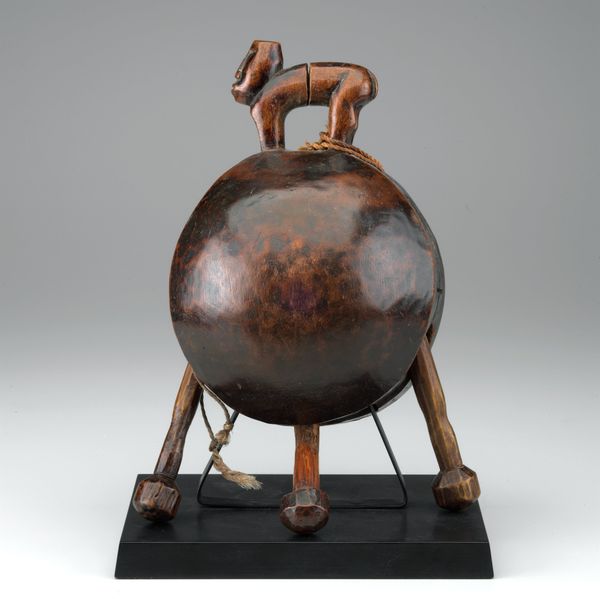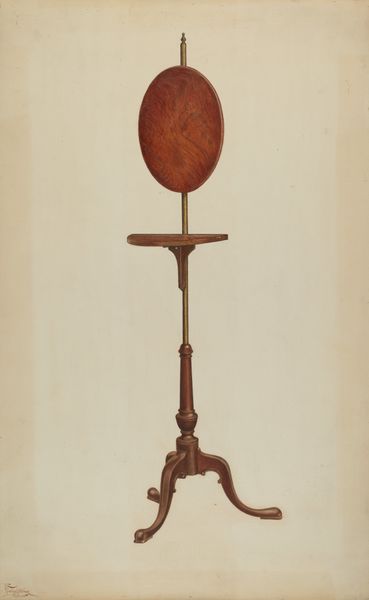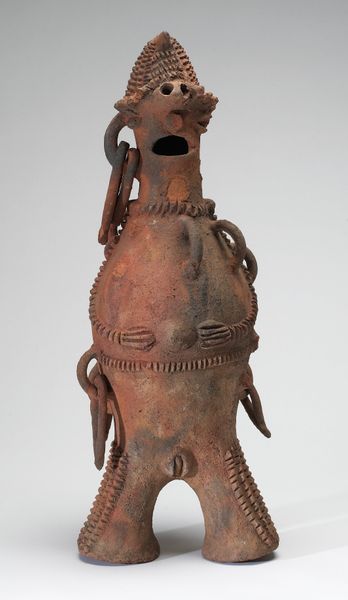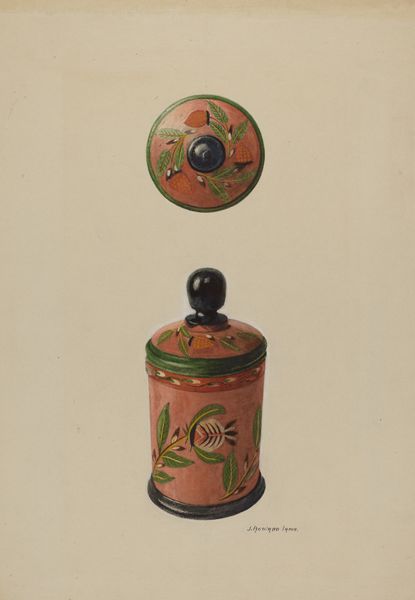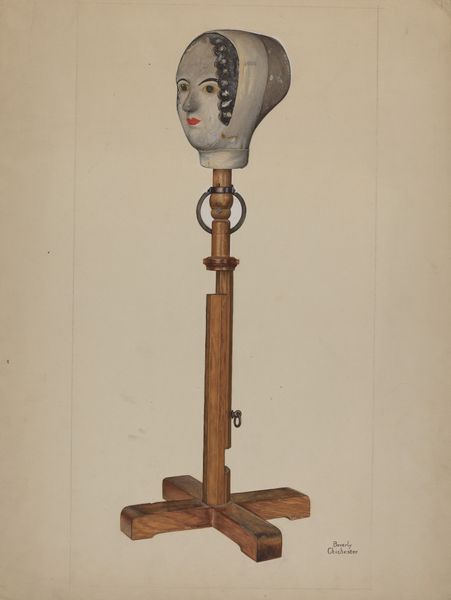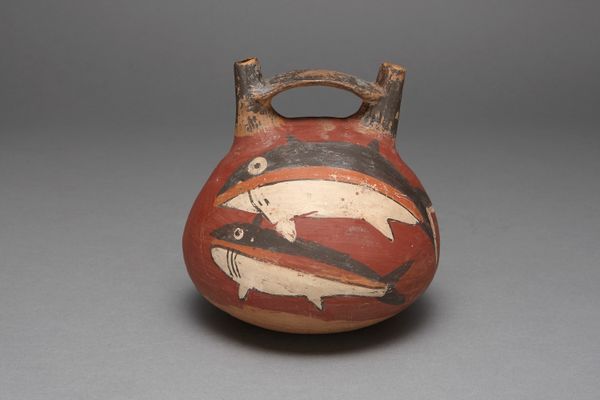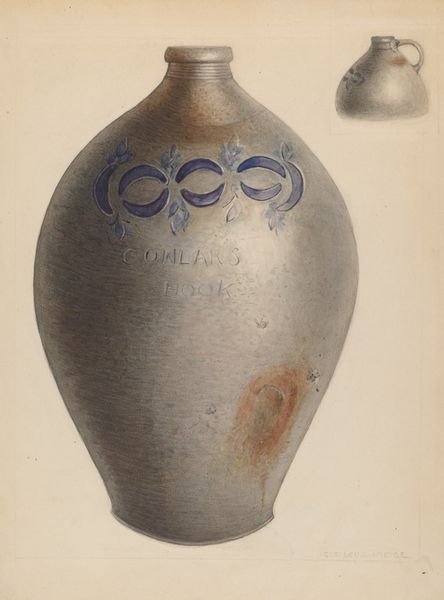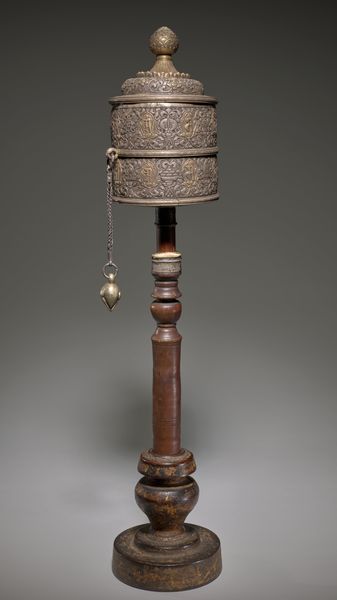
drawing, watercolor, sculpture
#
drawing
#
sculpture
#
oil painting
#
watercolor
#
sculpture
#
watercolour illustration
#
decorative-art
Dimensions: overall: 29.5 x 21.8 cm (11 5/8 x 8 9/16 in.) Original IAD Object: 5 5/8" high
Copyright: National Gallery of Art: CC0 1.0
Curator: So, here we have a watercolor of Walter Hochstrasser's "Toy Bank: Globe," made around 1939. It strikes me as quite… ordinary, in its subject matter. What do you make of it? Editor: It's a beautiful rendering of an object you might overlook, this weathered globe moneybox. I wonder what made him decide to paint it, and how did its use inform his choices. What stands out to you in this piece? Curator: I'm drawn to the materiality, and labor behind its creation and its inspiration. The artist took the time to represent it, layer by layer, and he thought this object deserved study. The toy bank, a common piece, speaks volumes about industrial design and, most pointedly, capitalist incentives from a young age. Doesn't it? Editor: It certainly does! The text etched into the base reading ‘Globe Bank Pulaski, Tenn’, coupled with the eagle, suggests both a local production and aspiration for greater growth? What might Hochstrasser be hinting about consumerism, even unconsciously, through his artistic decisions? Curator: Exactly. And look at the wear and tear meticulously captured! It makes you consider its function. Who was saving what? Why "pennies first?" The object, the watercolor painting, and this context. The medium elevates something mundane while simultaneously emphasizing the production and use behind these goods. It's about the economic backdrop shaping even childhood innocence. Editor: That’s a great way to think about it. Thanks to Walter and you, I’ll think about toys much differently, examining their own kind of labour! Curator: And likewise for me, considering more thoughtfully where commodities sit in our aesthetic values.
Comments
No comments
Be the first to comment and join the conversation on the ultimate creative platform.

